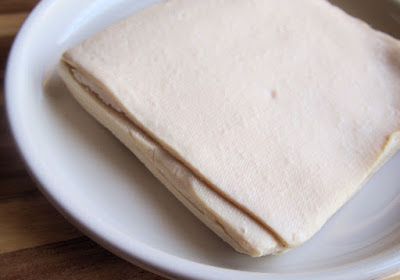When I was living by myself, most of the time I made simple vegetable dishes such as soup, curry or quick rice bowls with occasional meat dishes. I repeated similar dishes.. and it was a bit boring, as I think of it now.
Now I am preparing food for me and my fiance, I enjoy cooking than ever before. Because he loves to eat, and has been to all those good restaurants in NYC, I feel a bit more motivated, and become more serious about cooking.
It is a great feeling when we cook for someone and see them enjoying it :)
Since he loves Japanese Izakaya(tapas bar), I often make dishes we see on their menu. Today's recipe is Tebasaki, Chiken wing with pepper and sweet savory sauce.
Tebasaki is such a crowd pleaser and every time I made for parties, they loved it. The aroma of sweet savory sauce is so appetizing! In Izakaya, wings are usually deep fried, but here I just fried with less amount of oil to make it healthier. Therefore texture is softer than deep-fried ones, but it still tastes delicious ;)
If you prefer extra crispy skin, you can deep fry just like you make Karaage before soaking in the sauce (Tips: Fry twice! See my recipes Salmon Tatsuta)
手羽先の甘辛揚げ
Tebasaki no Amakara Age: Chicken Wings with Savory Sweet Glaze
Ingredients for 4
- Chicken wings: 10 pieces
- Katakuriko(Potato starch): 3 tbsp
- Soy sauce: 2 tbsp
- Sake: 2 tbsp
- Sugar: 1 tbsp
- garlic: 1 clove, ground
- Salt
- Black Pepper
- Sesame seeds(Optional)
- Shichimi Pepper(Optional)
- Fork the wings, salt evenly and refrigerate for 30 minutes or longer
- To make glaze, mix soy sauce, sake, sugar and garlic, and bring it to boil. As the mixture thickens, remove from the heat and put it aside.
- Take out the wings from the refrigerator, pat dry with paper towel and sprinkle black pepper
- Put wings in a bowl, sprinkle Katakuriko and toss it until wings are evenly covered
- On a frying pan, heat about 1/2 inch of oil , fry both sides of the wings until the skin become golden brown
- Transfer wings to the glaze and coat it
- Sprinkle with sesame seeds and Shichimi pepper(optional) and serve
This day, we had Tebasaki with Okura&Hijiki seaweed salad, and brown rice. The salad was also yummy so I will post the recipe sometime soon :)

































